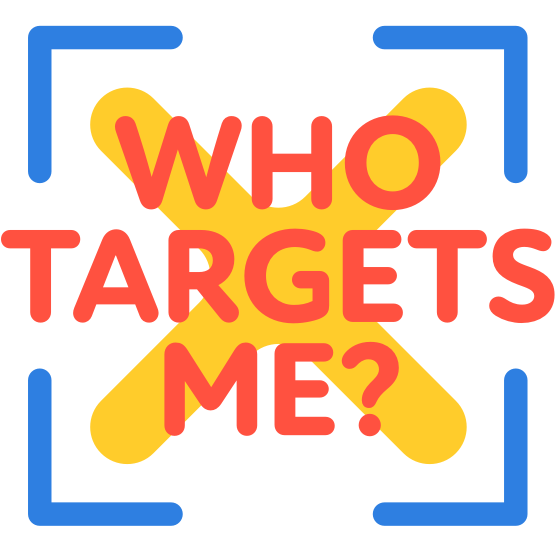In October 2019, TikTok banned political advertising on its services, preventing parties and candidates from reaching voters through paid content, even via influencer promotions. (1) On the face of it, a ban on political ads may seem like a good idea. With so many instances of campaigns misusing ads by spreading lies and abusing data it’s surely better to get rid of them altogether. Isn’t that a win for the quality of debate and user privacy? Well, that’s largely how TikTok frames it.
But it’s not so simple. Every policy choice has trade-offs. TikTok’s prohibition on political advertising creates unacknowledged winners and losers. And when you weigh it all up TikTok’s ban seems to favour a certain Donald J. Trump.
Trump vs. Biden on TikTok: A phoney war
Neither Trump nor Biden has a meaningful presence of their own on TikTok. With the current anti-China political environment in the US, many American politicians, particularly those on the right, are steering well-clear of the platform, as they call for it to be banned as a potential national security risk (e.g. Ron DeSantis just introduced a new law in Florida that explicitly bans government officials using it).
Does that mean there’s no political content on TikTok? Of course not. The campaigns will find a way to get their candidates on there (via their party pages or other friendly accounts), the media’s accounts will post videos of their speeches and events and their supporters will create thousands of hours of content of their own. In the end, there will be billions and billions of views of videos about the 2024 campaign on TikTok, whether the candidates have their own profiles or not.
And that’s where TikTok’s ad ban starts to help Trump. When political advertising is prohibited, candidates have to rely on organic reach. This rewards generating engagement and going viral with sensationalist, outrageous content and interactions that defy the norms of political behaviour. This clearly disadvantages political newcomers (like the other Republican primary challengers), but also incumbents who aren’t as naturally online – like Joe Biden.
There are at least ten 100k+ follower accounts posting pro-Trump content on TikTok, whereas there are none of similar size posting pro-Biden videos. While Trump’s star has certainly waned, and despite the demographic of his supporters being less likely to use TikTok overall, he’s still likely to dominate online conversation wherever on most platforms, as people start to have to take his 2024 candidacy seriously.
Candidates with younger supporters suffer more from ad bans
TikTok’s ad ban also disproportionately disadvantages candidates with a younger support base, because they can’t run the paid fundraising and mobilisation posts that form the basis of any modern Democratic Party campaign. TikTok’s audience is much younger than that of other social media platforms, with 80% of its users in the US aged between 16-34 (1). Past voting behaviour tells us young voters tend to vote more often for Democratic candidates. In the 2022 Midterms, for instance, 6 in 10 voters under 30 years old supported Democrats for Congress and in some races, such as Pennsylvania, up to 70% of young voters voted Democrat (1).
Therefore, TikTok seems to hold much greater advertising potential for Democratic candidates than it does for Republicans, while being the only major platform where they cannot reach voters through paid content (true now Twitter has announced its decision to bring back political ads for 2024).
Meanwhile, candidates remain free to run ads on Facebook and Instagram in order to reach the typically older audiences found there. But these platforms represent a much greater share of target voters for Republicans than they do for many Democrats, with 56% of GOP-leaning voters aged 50 and older. (1)
Though Biden will raise and spend more than Trump in the 2024 cycle (quite possibly by a large margin), TikTok’s ad ban does hand Trump a small relative victory, because it makes it harder for the current President to fully mobilise a big group of his supporters.
As always, a little regulation is the answer
From TikTok’s perspective, it’s easy to see why banning political ads is the safest option. TikTok faces pressure from both sides of the political aisle to allay fears that its users’ data is being accessed by the Chinese government, and it runs a serious risk of being banned in the US entirely.
In the last few weeks the company has embarked on a push to convince US lawmakers that it isn’t a threat to US national security. (1) And so, where it can take steps to prevent any further political controversy from erupting, such as limiting the fallout of political ad disinformation or data misuse, it probably makes sense from a business perspective for it to keep the ban.
However, what’s good for TikTok isn’t always what’s best for a balanced electoral process. And given how ad bans can diminish opportunities for new candidates, and reinforce the status quo, prohibiting political ads isn’t a policy choice without problems.
The ongoing issue here is a lack of clear regulation for online political advertising and the absence of serious data protection law in the US. In that vacuum, private companies make policy decisions that benefit their perceived interests before anything else. If TikTok does want to help create a political campaigning environment accessible to newcomers, that’s engaging for younger audiences and which doesn’t inadvertently reward sensationalist behaviour, it will need to consider bringing back political ads in a safe and measured way (perhaps by allowing ads from federal candidates, while keeping the PACs away).
